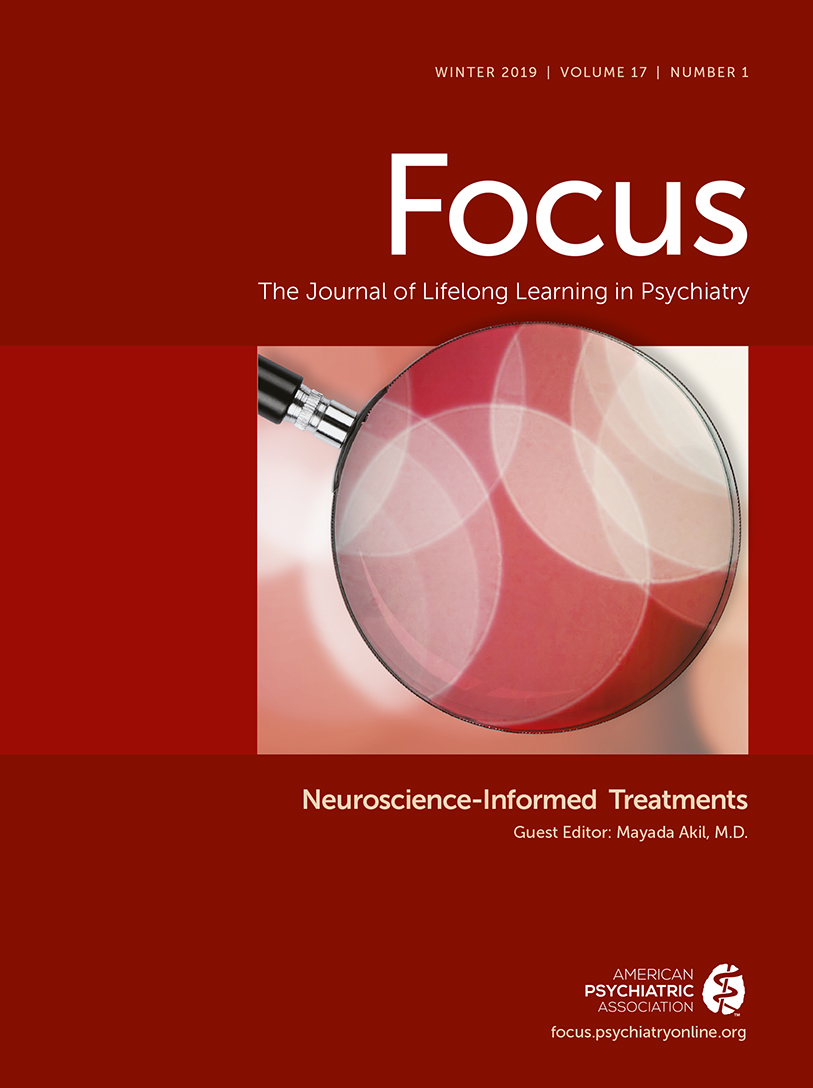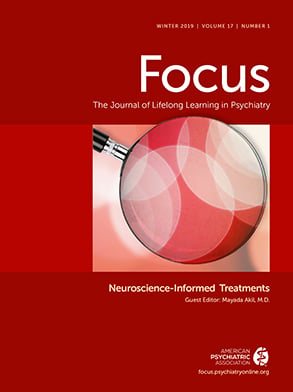(Reprinted with permission from Acta Psychatrica Scandinavica (John Wiley & Sons, Ltd.); ©John Wiley & Sons A/S. Published by John Wiley & Sons Ltd. Acta Psychiatrica Scandinavica 2018: 138:177–179)
Depression is the leading cause of disability worldwide, with over 4.4% of the global population living with this disorder. However, knowledge about the neurobiological underpinnings of depression remains limited and currently available treatment options are inadequate for many patients. This year, 2018, marks the 80th anniversary of electroconvulsive therapy (ECT). Remarkably, ECT continues to be the most effective acute treatment for severe often treatment-resistant depression, with over 50% of patients attaining remission (
1). Despite its proven effectiveness, ECT is relatively rarely used, owing to various factors including the stigma around its use, concerns about cognitive side-effects, the perceived high cost of treatment, lack of access and limited knowledge about how it works. However, a recent health economics study has indicated that ECT represents the most cost-effective third-line strategy for antidepressant treatment following two rounds of failed pharmacotherapy/psychotherapy (
2).
The mechanism of action of ECT is not yet fully understood, although much headway has been made in recent years. To date, myriad theories have been proposed regarding its mechanism of action, which have been classified into neurophysiological, neurobiochemical and neuroplastic processes (
3). Specifically, the mechanisms proposed so far have involved neurotransmitters, neurotrophic factors, the immune system, the hypothalamic–pituitary–adrenal axis, neuroplasticity, epigenetic modifications, brain neurophysiology, brain circuitry and brain structure. Over the past two decades, there has been a shift towards the theory that ECT mediates its effects by inducing neuroplastic changes (
4).
It is widely known that ECT induces structural brain changes. The systematic review and meta-analysis published in this month’s issue
of Acta Psychiatrica Scandinavica by Gbyl and Videbech of magnetic resonance imaging (MRI) volumetric studies show that ECT induces a significant increase in hippocampal volume, reporting effect sizes of 0.30 for the right hippocampus and 0.39 for the left hippocampus (
5). These changes correspond to a volume increase in the region of 4–5%. Increases in amygdalar volume have also been consistently reported. In addition, ECT was found to increase the integrity of white matter tracts (structural connectivity) in the frontal and temporal lobes. Notably, their review found no association between increases in regional brain volumes and clinical outcomes or cognition post-ECT. Indeed, hippocampal volumes appear to return to baseline levels by six months post-treatment, with no relationship to mood status or relapse of depressive symptoms. Importantly, the review also indicates that ECT does not induce brain damage, which is in line with previous imaging reports and postmortem brain and animal studies. This finding will provide additional reassurance to patients, their carers and treating clinicians.
Small sample sizes are a limitation of most of the MRI studies included in Gbyl and Videbech’s review (
5). Addressing this issue, the Global ECTMRI Research Collaboration (GEMRIC) was recently established to carry out a multisite investigation (
n = 281 patients with a major depressive episode) of the neural mechanisms underlying the clinical response to ECT. The first report from this collaboration has recently been published (
6). A mega-analysis of their MRI data examined whether increases in hippocampal volume following ECT are related to the number of ECT sessions or electrode placement. The results show that there is a 0.28% increase in hippocampal volume after each individual ECT session, with larger changes occurring earlier in the treatment series, and that electrode placement impacts on volume change such that right unilateral ECT has less effect on the left hippocampus. Again, hippocampal enlargement was not associated with clinical response to ECT.
Overall, the results from both of these reports indicate that clinical outcomes following ECT are not explained by increases in hippocampal volume. The question therefore arises, what do these brain structural changes actually mean? Importantly, Gbyl and Videbech (
5) have excluded the possibility that oedema is responsible for such changes. While the increases in hippocampal volume identified by imaging studies are notable, the mechanisms underlying these and related structural changes remain unclear. Many researchers have been investigating the cellular and molecular changes entrained by ECT that might underlie these volume changes. Given the speed with which the increase in volume occurs, as well as its extent, it cannot wholly be owing to neurogenesis. There are many other cellular processes that may be responsible, including dendritogenesis, synaptogenesis, angiogenesis, reactive gliosis, and neuroinflammation, amongst others. It is likely that a combination of these underlies the structural changes seen following ECT.
However, the molecular changes that underpin the cellular and structural changes induced by ECT may not be related to its antidepressant effects. There may well be differences across the molecular and cellular changes that lead to structural changes but which are not necessarily related to clinical antidepressant effects.
One potential mechanism by which ECT works that has generated intense interest over the past number of years is the idea that an increase in potentially beneficial plasticity mechanisms (e.g. neurogenesis, dendritogenesis, synapse formation) occurs following ECT. Electroconvulsive stimulation (ECS), the animal equivalent of ECT, has been shown to increase hippocampal neurogenesis in rodents and non-human primates (
7), although this has not yet been fully confirmed for patients treated with ECT. Such cellular changes could be secondary to increased levels of neurotrophins, in particular brain-derived neurotrophic factor (BDNF), a key regulator of neuronal function. The neurotrophin hypothesis of depression suggests that depression arises owing to stress-induced decreases in BDNF and other trophic factors and that the effects of antidepressant treatments are mediated through increases in BDNF expression and neurogenesis as well as alterations in neuronal morphology and synaptic plasticity. Both preclinical studies of ECS and clinical studies have shown that ECS/ECT leads to increases in brain and blood levels of BDNF (
8). The only meta-analyses to date assessing molecular mechanisms of ECT have been conducted on this neurotrophin owing to the wealth of both clinical and preclinical data generated about it in relation to depression and antidepressant treatments. One of these meta-analyses found only small effect sizes for ECS/ECT-induced changes in BDNF in blood in both animals and humans, although medium effect sizes were found for changes in BDNF in the animal brain (
8). However, changes in peripheral blood BDNF do not show any association with clinical outcomes in human studies (
8,
9).
Although a wealth of studies have investigated the mechanisms of action of ECT, few, if any, theories have been widely accepted or so far provided translational insights into the factors underlying the clinical response to ECT. The lack of association with either structural brain or peripheral molecular changes following ECT and clinical outcomes is a common finding throughout the literature. One of the major problems associated with investigating depression is that the brain is not readily accessible without invasive procedures. While the collection of cerebrospinal fluid (CSF) is technically possible, and CSF can be reflective of changes taking place in the brain, the method of collection is invasive and so CSF is not always easily collected from patients with depression. Clinical molecular studies are therefore mostly limited to using peripherally available tissues and fluids, such as blood, urine and saliva, owing to their ease of collection. However, changes detected in these fluids may not be reflective of brain changes. Moreover, studies using peripheral fluids, in particular blood, often do not account for variations in the numerous cell types found therein. Biomarker investigations carried out to date using blood have failed to show adequate sensitivity and specificity. Thus, the field urgently needs new approaches aimed towards identifying peripheral blood biomarkers that will aid in the routine clinical diagnosis of depression and assist in determining the response to antidepressant treatments, including ECT.
This begs the question, how do we proceed from here? How can we better investigate the underlying neurobiology of depression and identify biomarkers that will aid in diagnosis and predicting treatment outcomes? To do so, more sophisticated approaches are required. With regard to imaging studies, multimodal MRI (structural, diffusionweighted imaging, diffusion tensor imaging, magnetic resonance spectroscopy, resting state MRI, cerebral blood flow) carried out in the same sample of patients would provide better insight into the changes occurring following treatment at a brain level. Moreover, the establishment of consortia to examine neural and peripheral blood molecular changes in patients with depression, and in particular those treated with ECT, would aid in increasing samples sizes. This is often a limitation of studies carried out in this field, in particular for genomewide association (GWAS) studies, although important developments are currently underway in this area via the Psychiatric Genomics Consortium. Another limitation of many molecular studies is the fact that oftentimes investigators do not take confounding factors into account; this is essential going forward. With regard to molecular methods, the use of synaptosomes, exosomes and cell sorting techniques, such as flow cytometry, may lead to better insights at a cellular level in brain and peripheral blood. Exosomes isolated from peripheral fluids are attractive for clinical diagnostics and biomarker discovery as they are highly stable and so can be stored over a long period and can be tracked to their cell of origin based on surface marker expression, and their content (proteins, lipids, nucleic acids) is found to be altered during disease conditions (
10). Thus, exosomes represent a form of ‘liquid biopsy’ that may provide a window into changes occurring in the brain, as these extracellular vesicles are capable of crossing the blood–brain barrier. For example, neural exosomes isolated from peripheral blood are being used in studies of neurodegenerative disorders, such as Alzheimer’s disease, and are already yielding promise as diagnostic tools (
10).
Understanding the precise molecular mechanisms of action of ECT, one of the most effective treatments in medicine, would represent a major advance in helping to refine this treatment and indeed understanding the neurobiology of depression itself.

